Writing in issue 99 of Retro Gamer, columnist and previous Savage Pixels interviewee Iain Lee asks: “Was there a point where you gave up on computer games?”
There was for me. Sometime between the PlayStation’s launch and the Dreamcast’s demise, I just… fell out of love with gaming. Sure, sports games were okay; and I’d often steal a turn on Resident Evil 3 or Grand Theft Auto 2, just to keep a toe dipped in the contemporary scene. But the best part of a (golden) generation of games passed me by, and I can’t even really explain why. I’m playing catch-up today, having bought Metroid: Prime for the GameCube and Shenmue 2 for the Xbox since the last of these columns.
And I can’t wait to get stuck into them because, at 32, I don’t think I’ve ever been more enthused by gaming. Perhaps it’s because the real world I know now, compared to that of my late-teens and early 20s, is so very different: and as responsibilities increase, so the lure of escape into wonderful worlds of pixels and polygons becomes that much more irresistible. When the wife and kid are in bed, I’m blistering thumbs working my way through the games you see reviewed below, and so many more besides.
Which leads me to: you, assuming you’re in a situation where, right now, games are strange, alien constructs, the playthings of terrible geeks, dorky losers and spotty loners. I frequently see comments on The Guardian’s games coverage from readers basically saying: if you’re into this sort of stuff, there must be something wrong with you. I picture them all wearing Liam Gallagher masks, for some reason. But this oddly black and white attitude – one where people either like games, or don’t, with no middle ground (for those who love Tetris, but aren’t so taken with Tekken) – robs its ‘owner’ of some magical, memorable experiences.
So, below I’ve highlighted eight games – really fantastic, breathtaking, beguiling pieces of high-definition art – which, I hope, will tempt readers currently using their 360 exclusively to play FIFA, or the occasional triple-A release that’s made its way into Tesco at a price you can’t refuse, into investigating rather more esoteric, innovative and downright amazing titles. These games will, given the opportunity, get you back into gaming with a bump. And from there… well, it’s not so far to hello eBay, goodbye savings.
Some of these have fallen victim to poor sales, leading to job losses and developer closures; some have been knocked by a couple of reviews and landed a Metacritic average that might put the casual gamer off taking a punt. But to these eyes, ears, fingers and thumbs, they’re essential cornerstones of any current-generation console collection.
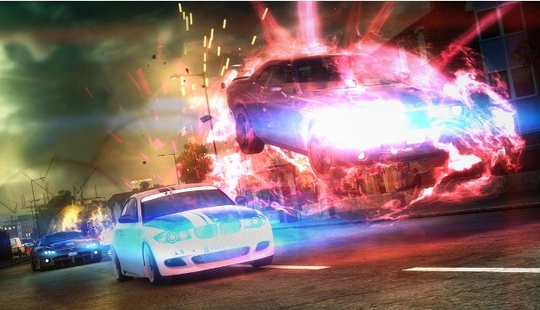
Get Gaming Again: Part One
Blur
(Bizarre Creations, Activision Blizzard; 2010)
Platforms: PlayStation 3, Xbox 360, Microsoft Windows
Racing games today are tremendous simulators. Codemasters’ F1 series is the closest the likes of you or I will probably ever come to emulating the successes of those multi-millionaires in their (as good as) flying machines; and the Project Gotham and Gran Turismo titles have traded in car porn for years now. But they’re all a bit… serious, aren’t they? Wouldn’t it be awesome if a game came along that combined amazing visuals, real-life vehicles and recognisable locations with the kind of gameplay that one used to be wowed by on the likes of Mario Kart and Diddy Kong Racing? In 2010, Bizarre Creations delivered just that title in Blur – and were subsequently let go by Activision as their brilliant product sold bugger all copies. Today you can get Blur for around a tenner. Please, do. And then marvel as your Mustang launches a missile from its grill, and your Hummer releases a mine from its rear axle. No other racing game of this generation is this much fun. Serious.
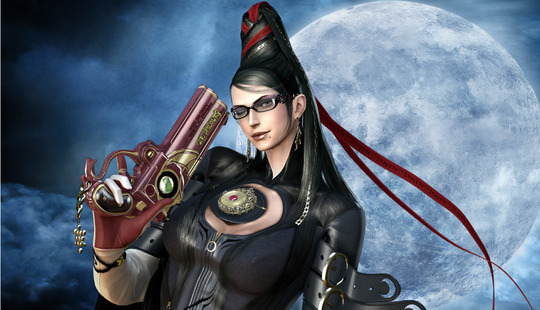
Bayonetta
(Platinum Games/Nex Entertainment, Sega; 2009/10)
Platforms: PlayStation 3, Xbox 360
Trying to remember that last game that had me sweating through button-mashing and crying tears of laughter… Oh, yeah, Bayonetta. With Devil May Cry director Hideki Kamiya at the helm, the action’s never less than frantic; and so easy is the game to simply pick up and play, combat as refined or as chaotic as your own digital dexterity allows it to be, that this rightly celebrated release leaves a considerable first impression. Bayonetta has a real arcade feel to it – Sega’s role as publisher feels right, as there are certainly elements of Golden Axe and even Altered Beast at play here. The supernatural storyline is almost impenetrably bonkers – but it doesn’t matter, as understanding the ‘why’ behind what’s unfolding is a distant second in one’s enjoyment of this to dishing out the ‘how’, with fists, heels, guns and hair. Yes, hair. The accolades in the video below: Bayonetta deserves them all.
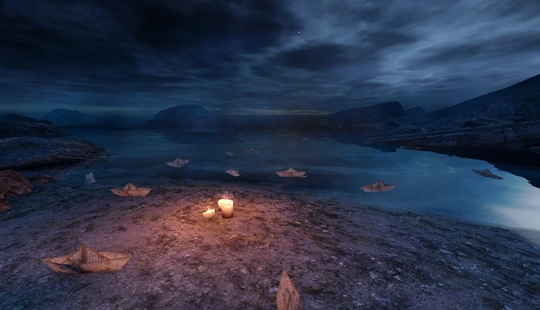
Dear Esther
(thechineseroom/Robert Briscoe, Steam; 2012)
Platforms: Mac OS X, Microsoft Windows, Linux, OnLive
My choices so far have been high-speed affairs requiring quick reactions to really get the most out of them. Dear Esther is something… else. Like Limbo, detailed later in this column, this is a game that leads its players to ask: is this a game? And like Limbo, it’s faintly unsettling, characterised by an elegant eeriness. But unlike Limbo, which plays as a puzzle-platformer at its core, not a great deal happens – not like it does in most games, anyway. The player – the explorer, the narrator (?) – constructs their own plot from a series of scattered letters, fleeting insights into what may have happened on Dear Esther’s beautiful, and haunted (again, ?), Hebridean setting. One is left to wander (albeit via subtle prompts, tugging at today’s gamer’s appetite for exploration), viewing the landscape from a first-person perspective, accompanied only by the sound of the surrounding sea, occasional interjections of dialogue, and a score that wonderfully underpins the slow-reveal of Dear Esther’s secrets. It’s not a game that will take you long to ‘complete’, but this is one that’ll stay long in the memory, and perhaps the strongest argument yet that ‘games’ are very capable of qualifying as ‘art’. Utterly unique – and as compelling to watch as to play.
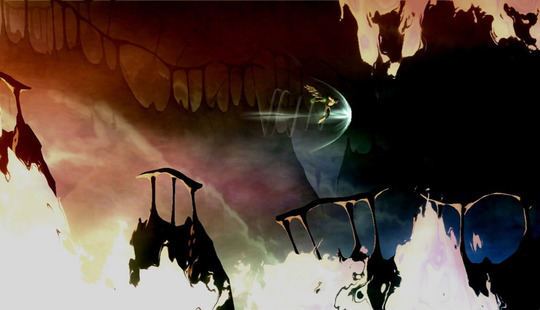
El Shaddai: Ascension of the Metatron
(Ignition Tokyo, UTV Ignition Entertainment; 2011)
Platforms: PlayStation 3, Xbox 360
(Briefly mentioned in Savage Pixels #3)
Well received critically but a commercial non-event, El Shaddai’s elementary mechanics (in other words: it has easy controls that one can pick up within minutes) and repetitive combat might have marked it as a makeweight title. But the 3D/2D hack-and-slash (and run and gun) gameplay came wrapped in some of the most (divisibly, admittedly) beautiful visuals to ever grace an action title. Also: it’s fun. It might sound like a simple enough element in videogames, but it’s amazing how many developers seem to put enjoyment some places behind perceived innovation and aesthetic frills in their priorities (read: list of gamer demands). El Shaddai’s plot is inspired by the Book of Enoch, but you need not have encyclopaedic knowledge of ancient Jewish texts to make sense of what’s happening; and, brilliantly, if you want to you can just sit back and let the game’s amazing visuals teleport you somewhere entirely new. It’s like… it’s like… if Roger Dean and Jordan Mechner made a game together, after pulling an all-nighter on the God of War series. And if you’re after a final stamp of quality assurance, members of the team behind this (including its art director) worked on the PlayStation 2 classic Okami, one of the Best Games Of All Time.

Fantastic Five – Homeboy Sandman
Queens-born and Stones Throw-signed MC Homeboy Sandman (his most excellent real name is Angel Del Villar II) has been actively releasing material since 2007; but it’s only now, in 2012, that he’s attracting the attention that his inspired rhymes and laidback beats have long deserved. Following a couple of EP releases this year, his first long-player for Stones Throw, First of a Living Breed, was released in the UK on September 17 to positive reviews (Check out the BBC Music verdict here).
Asked for his five favourite videogames of all time, here’s what the one-time law student turned full-time rapper had to say…
“Due to financial constraints I ain't really get Nintendo until it was kinda played out. Yet, even still…”
Bill Walsh College Football
(Multi-format; Wikipedia)
“Bill Walsh College Football on Sega Genesis… I used to play this in high school. I ain’t have it, but this kid Bolduc had it. I would use Auburn ’83 and would be unstoppable running with Bo Jackson. It wasn’t even fair.”
Contra
(Arcade, multi-format for home conversion; Wikipedia)
“I know Contra is a cliché but obviously there’s the 30 lives code, and then I was also feeling the gun assortment. The lazer I felt, but obviously the spread was the most practical.”
NOT Zelda
(N/A)
“I hated Zelda, sun. How could cats love playing Zelda so much? So boring.”
R.C. Pro-AM
(NES, Mega Drive; Wikipedia)
“I used to smoke cats in R.C. Pro-AM.”
Mike Tyson’s Punch Out!!
(NES; Wikipedia)
“I never beat this game. But I used to get to Mike Tyson a lot, but then he'd bust me. My timing punching Bald Bull in the stomach when he'd charge though was mad precise.”
Homeboy Sandman is on this internet thing here, Facebook here, and First of a Living Breed can be purchased direct from Stones Throw here.
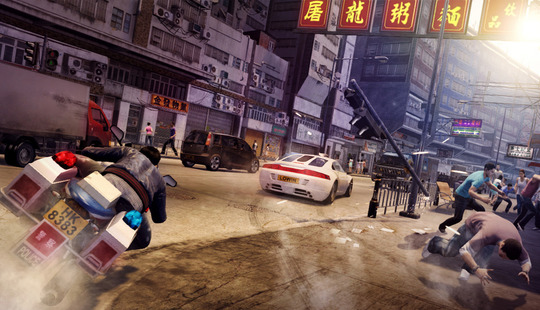
Review – Sleeping Dogs
(United Front Games, Square Enix)
Platforms: Xbox 360, PlayStation 3, Windows
A chimera of an offering with a tumultuous development history spanning four years, Sleeping Dogs has no right to be as good as it is. Borrowing – to be polite – from a succession of preceding titles, originality at a premium, it should be a muddled proposition swiftly dispatched to the rising pile of middle-tier titles only usually picked up when found for a fiver. Yet I found myself exploring every square inch of its wonderfully presented Hong Kong, chasing collectibles and even caring about the fate of a few characters. That wasn’t in the brochure.
A third-person sandbox affair set in the aforementioned former British colony, or at least an exaggerated vision of it, Sleeping Dogs is immediately aesthetically reminiscent of Grand Theft Auto IV, and its combat – mostly melee-style – is unashamedly based on Rocksteady’s Batman games, Arkham Asylum and City. The island can be explored via a wide variety of vehicles; taxis can be hired to fast-travel to a desired destination; and the player-controlled protagonist, undercover cop Wei Shen, acquires more impressive homes as the game progresses. There are echoes of the PlayStation 2’s Yakuza and its sequel, likewise the two Shenmue games. It all sounds too familiar to comprise a hit, too second-hand to encourage several-hour sessions of play. But a hit this has been, topping the UK chart on its first week of release; and my 24 hours spent in its company before writing these words is suggestive of a few late nights and foggy mornings.
The success of Sleeping Dogs lies not in any singular feature – unlike, say, the Max Payne series, which makes such a USP out of its bullet time mechanic (successfully appropriated here, actually). It’s the whole package that leaves a distinct impression. It’s not the prettiest game to look at; cars aren’t as responsive as those found in comparable releases; the shooting sections can be clumsy and, generally, Sleeping Dogs doesn’t go out of its way to challenge its player. Yet everything’s done to a high-enough standard; and more pertinently is successfully gelled into a complete experience that never feels like a series of set-pieces ill-balanced with downtime distractions.
The plot – Shen is undercover within a Triad gang, with the aim being to bring them down from the inside – is predictable enough, but it’s well fleshed and the main characters around Shen, on both the criminal and crime-fighting sides, feel more three-dimensional than your usual suspects. Worthy of applause for his wicked voicing of Police Superintendent Thomas Pendrew is Tom Wilkinson, one of a handful of US/UK actors involved with some impressive credits to their name. Also voicing roles are Lucy Liu and Emma Stone, though both US film stars are arguably underused. Will Yun Lee impresses as Shen – an experienced TV actor in the States, this role could open more doors for him than Thief or Bionic Woman ever could.
The game is broken into ‘missions’ – much like the structure of the sandbox GTA games. Police cases can be taken on in addition to the main plot – four in total, and completing these increases Shen’s police experience – while favours can be performed for more shady sorts, like stealing vans and aiding getaways. These criminal acts increase Shen’s Triad experience – and both this and his police experience unlock abilities as they build. Shen can earn extra experience by dressing a certain way, and a separate Face meter measuring his overall reputation goes towards some pretty handy perks like having a car delivered to (near enough) any location, and improved combat performance.
Collectibles are scattered around Hong Kong, to be found both as the main plot unfolds and as side pursuits to the game’s narrative backbone. Health shrines boost (yup) Shen’s overall health, ultimately doubling the punishment he can take if all are discovered; and Jade statues, when returned to the dojo they were stolen from, unlock new martial arts techniques. If you’re willing to put the story of Sleeping Dogs aside for a while, ticking off these ‘extras’ will give you a distinct advantage over the harder opponents encountered in the game’s final few hours. Lock boxes contain money and clothing, and sometimes firearms, and are scattered all over Hong Kong – play through enough, and eventually all of them become marked on your map, for easy discovery.
Exactly when one completes Sleeping Dogs will depend on how much time is spent building up Shen’s offensive and defensive capabilities. It’s possible that one could breeze through in something like 15 or 16 hours (I’m not sold on the claims by some magazines that the game can be beaten in 12), but it’s more likely that a figure around 20 will be reached, allowing for a smattering of side-quest completion (as achievements are available for completing certain percentages of optional police cases and Triad activities).
On the topic of achievements, some are easily met – drive around the island and you’ll score one for exploration; change your whole outfit in a single wardrobe visit and you’ll unlock another; win $50k on a single cockfight gamble and, yup, another one. But some are incredibly tough – 100% completion isn’t something that the average player is going to get out of Sleeping Dogs. It’s actually amazingly difficult to drive for a full two minutes, at speed, without scraping another vehicle or bumping a traffic light. (As, yes, there’s an achievement available for doing just that… don’t try for it while driving a stolen bus.)
A handful of irritations do present themselves. Shen is an athletic fellow (a couple of small side-missions have him completing free-run courses for a drugged-up cameraman), but despite being able to scale pretty sizeable piles of bricks and mortar, some comparatively small hops are inexplicably beyond him. Also, there are parts of the city where street lights are near walls, with enough of a gap between them for a man to slip through easily; yet an invisible barrier stops Shen in his tracks, which is a pain indeed when one is being pursued by gun-wielding assailants. Waypoints aren’t always clear, and Shen has to be stood in just the right place to open car doors and lockboxes – again, frustrating under pressure. These bugs (quirks if you prefer) shouldn’t really be present in a game that’s spent as long as it has in development; but they don’t spoil the end product particularly, never provoking rage-quit fits.
One question presents itself upon completion of Sleeping Dogs: Did I enjoy that because it’s a genuinely good game, or because it’s the first halfway decent effort to follow a seasonal desert devoid of digital treats? Some from A, some from B, I suppose – but United Front must be proud of their achievements here, not least of all because there was once a very strong possibility of Sleeping Dogs not even reaching release. That is has is the greatest triumph; that the end product is an engaging, accessible game that uses established mechanics in a way that doesn’t feel like shameless robbery, and tells a convincing tale of twists and turns, affections and deceptions, in a style unexpected from titles realised under stress, is a superb bonus.

Fantastic Five – STAY+
Matt Farthing is the musical muscle of Stay+, a Manchester-based (or are they?) duo whose electronic fare manages to feel both familiar and envelope-pushing, the latter impression aided in no small part by their predilection for dynamic, innovative visuals.
Matt’s no stranger to the videogames world, and evidently enjoyed listing his Fantastic Five…
Team Fortress Classic (HL 1 Mod)
(Windows; Wikipedia)
“From quite a young age I was heavily into the idea of online gaming. I'd install demos of Rise of the Triad, Duke Nukem and Doom and – full of wide-eyed childish hope and the belief that everything to do with computers was somehow magical – I'd try to connect to multiplayer servers. Even though we didn't 'have' the internet.
“When we finally 'got' the internet, technology had left us behind. The family's shit old Pentium 90 didn't have a 3D card so my online gaming experience was restricted to trolling chatrooms and getting into message board flame wars for sport. I'd hang at my mate's houses playing Quake 2 CTF for days at a time, marvelling at the coloured lighting, almost believable curved edges and rocking out to Sonic Mayhem.
“Then Half Life came out. No 3D card necessary. I'd play the living shit out of Team Fortress Classic (haven't got the fine motor skills/patience for CS). Joined a 'clan' [UKD], played as an engineer on a screen the size of a postage stamp. That game was pure class.”
Pokémon Red
(Game Boy; Wikipedia)
“I think that this franchise, alongside Final Fantasy VII, was like a gateway drug to the depraved world of RPGs for a lot of people I know. This was digital crack in a little red cartridge. From that all important first decision in Prof. Oak's laboratory, to the unbridled tension when you fight that Red Gyarados or the glitched-out MissingNo (you only got one chance in the entire game to catch them), it was un-put-down-able. Then factor in the trading system, the cards, the TV show... us kids didn't stand a chance.
“But the really amazing thing is that, under all the pomp and media assault, this is actually a fantastic game. A rich world to explore, great art style, a good story, 151 individual Pokémon to collect and a well fleshed-out combat system.”
DayZ (ARMA 2 mod)
(Windows; Wikipedia)
“This is a weird choice as it's the only game to make my 30-plus long shortlist that I haven't actually... played. What I have done, however, is watch 20-something hours of gameplay of it on YouTube. What I absolutely love about this game is what it represents. There's a lack of recent games on my list, because games are getting stupider. The Call of Duty franchise reaches new depths of stupidity with every iteration. Partially through catering for the casual, backwards-cap wearing, jock crowd and partially through this 'blockbuster' cinematic bullshit experience that everyone seems to think they crave that, in reality, just snatches the controller out of your hand every time something interesting happens.”
“DayZ is an incredibly unforgiving first person zombie survival simulator modded off the back of an incredibly unforgiving realistic modern war simulator. This game is fucking hard. If you charge into the field, you're gonna die. If you make too much noise, you're gonna die. If you get injured - you're gonna bleed out and die. You might crawl towards another player (finding them is rare, the closest a lot of people come to interaction being the sound of far-off and desperate gunfire) with the hope that he/she will take pity and toss you a blood bag. Most likely they'll stave your head in with a pipe (ammo is scarce) and thieve all your shit. It's emergent gameplay that relies on real people to provide the drama, not pretty cut scenes.”
“It's... amazing, and cold-hearted, and it plays into the worst sides of human nature. Watch "The Days Ahead" play through videos on YouTube. You'll get addicted.”
Doom 2
(Nightmare difficulty co-op over serial link, running Simpsons.wad, at 3am when you're 12-years-old)
(Multi-format; Wikipedia)
“Doom 1/2 is an obvious choice. A defining experience for any 90s gamer. Doom 2 running the Simpsons.wad in your PJs on nightmare difficultly with you and your cousin's computers all linked up with serial cables, whilst not particularly good, was pretty much the most fun I've ever had playing a computer game. You had to roll your sleeves up and type some pretty complicated shit into DOS but they were some good times.”
Minecraft
(Multi-format; Wikipedia)
“A game with no point. A developer with no publisher. On paper, niche at best; in reality, one of the most popular games of all time. This game is more than the some of its parts, of which there are many. This game makes you feel vulnerable, and sad, and lonely; but also gives you the most amazing sense of achievement and freedom. Much like DayZ the gameplay is emergent. Most of the time you are reacting to situations of your own creation, or random chance. Only, with purist Minecraft, there are no other people rolling the dice along with you. You just, sorta, live in it for as long as you want. It's a startlingly beautiful game. Without it I probably would have written about six albums by now.”
Matt’s found some time away from Minecraft to crack on with some music-making. A new Stay+ single is (or soon will be!) available via Black Butter, and they’re working on an AV EP, details of which will be posted at their Tumblr.
Stay+ link action:
Facebook
Twitter
YouTube
Soundcloud

Review – Transformers: Fall of Cybertron
(High Moon Studios, Activision)
Platforms: Windows, PlayStation 3, Xbox 360
High Moon’s 2010 Transformers game, War for Cybertron, was something of an anomaly amongst games featuring the seemingly never-ending conflict between (the heroic) Autobots and (the evil) Decepticons: it was (very) good. The official games of the Michael Bay movies? Terrible, awful things. But War for… successfully captured the spirit of fun that should run through any game where you get to play as a huge transforming robot with a massive gun or some at your disposal, and also delivered a storyline which fans of the 1980s comic and cartoon could enjoy with guilty pleasure-like relish. It was the best TF game since Melbourne House/Atari’s 2004 effort for the PlayStation 2.
And Fall of Cybertron is even more impressive than its predecessor – and, like it, is presented as an over-the-shoulder third-person shooter. As its title implies, the situation on the Transformers’ home planet has become desperate, and the race is on between the warring factions to escape their dying world for a new start somewhere across the galaxy. Hey! Guess where they’re headed!?
Yup, as Cliffjumper discovers during his stealth mission – the player gets to control a variety of characters, each with their own special abilities; the small, red Bumblebee-alike can turn invisible, allowing him to sneak past most enemies – the hulking metal ‘bots are off to Earth. Albeit an Earth that appears to be in a Mesozoic-like continental arrangement (0.55 on the launch trailer, embedded below) – didn’t they crash land four million years ago, rather than 250 million?
Such a small aesthetic oversight can’t take anything away from a game that, at times, stuns with its graphical presentation. Even when stationary, parts of each Transformer whirr and buzz, always on the move. Transformations themselves are great – there are few third-person gaming moments as great as running along as a character like Starscream or Vortex, shooting down an opponent before leaping into the air, transforming and soaring skywards to rain fire down upon more adversaries. It’s a very geeky variety of digital poetry in user-controlled motion. Jazz is great fun to play as, switching between speedy car-like mode and a robot form with the use of a Bionic Commando-like grappling gun.
If it wasn’t clear from the above words, I’m something of a TF aficionado. And Fall of… certainly plays its fan service card with gleeful regularity. Characters, well-voiced throughout (Ironhide aside – where’s the grumpiness?) quote lines from the 1986 animated movie – Grimlock and fellow Dinobot Slag, here renamed Slug, argue the toss over “caesium salami” and “beryllium baloney”, with Wheelie mercifully nowhere to be seen or heard; Megatron gatecrashes a crown-topped Starscream’s leadership party and reels off Galvatron’s movie line: “Coronation, Starscream? This is bad comedy.” (Find it at 0.38 here.) And to print any more examples is to ruin the fun to be had spotting the references yourself.
But even if Transformers was never a part of your childhood, this is still a really enjoyable, at times incredibly challenging action/adventure game. Each player-controlled Transformer has access to two weapons at any time, a regular one and a heavy weapon (less ammo, more power), plus a close-range melee attack. Every Transformer can attack in vehicle mode, but naturally tanks pack more of a punch than sporty hatchbacks.
Environments are (pleasingly) more varied than the winding corridors of War for… – a particularly great level has the player controlling an airborne character as he attempts to bring down a bridge, while late on a session as Starscream has the Decepticon air commander attacking a multi-levelled installation run by Shockwave, necessitating both nifty flying and close-quarters combat. Controls aren’t the most intuitive amongst games of this type, but any who’s played War for… will feel at home, and newcomers should click with it after 20 minutes or so. As there’s a lot of clicking to be done (the right stick on a 360 pad melees; the left transforms).
If you’re really after holes to pick at… Identikit enemies are a drag, but what is High Moon expected to do? Invent a raft of new Transformers and then kill them off three seconds after each has made an appearance? Save points are regular enough, but not always where they might be expected, which can hinder progress on occasion. The collision detection isn’t always perfect, and a couple of times it wasn’t clear, at all, where I was supposed to point my Transformer at in order to proceed.
Particularly annoying was a moment, or two, with Grimlock. To get through a half-open door a switch had to be struck on the other side, by hurling a barrel at it with amazing precision. Get the throw wrong, the door closes, and you have to start again (by hitting a switch on your own side of the barrier first). This comes after it’s been made clear, when Jazz and Cliffjumper track the AWOL Dinobot, that Grimlock can basically carve through whatever’s put in front of him. High Moon, please… If I miss the switch three times, can I please just kick the bloody door in? The ending’s a bit of an anticlimax but it sets up a third game in this series well enough. Hey! Guess where that’ll be set…
But really, I’m nitpicking. If you’re a TF fan, Fall of Cybertron is about as important to your 2012 as your Soundwave duvet cover was your 1987. And if you’re simply a fan of immersive, inventive and (and this is important!) entertaining third-person shooters, it’s got a load to offer you, too.
Sideswipe is in it. Wheelie isn’t. ‘The Touch’ plays over the credits while Jazz does a loose-hipped Cybertronian version of Peter Crouch's robotic dance moves. Excellent.
Get Gaming Again: Part Two
Back to Iain Lee. Closing his Retro Gamer column of issue 99, he writes: “I suspect a few of you out there have, at some point, turned your back on gaming. But we are back now, and I guess that’s all that matters.” Certainly eyes have been opened in recent times to the potential of games – to the depths they can explore, the emotions that they can stir. Yet it’s rare indeed that a title of ingenuity, integrity and against-the-grain extraordinariness tops the sales charts.
And it’s perhaps always been this way, certainly for the past couple of hardware cycles. Back in April 2003 Edge ran a cover feature titled, Bored to death of videogames?, examining the gaming world’s “mid-life crisis”. Then like now, sports simulations and awful (but) licensed games were amongst the most successful releases – the likes of Lord of the Rings, Harry Potter, FIFA, WWE and James Bond were big sellers. But the magazine offered alternatives to these box-tickers, listing 10 releases “capable of rekindling that old gaming passion”. In no particular order, they were: Pikmin, Ico, Super Monkey Ball, Dead or Alive Xtreme Beach Volleyball (yes, really), Metroid Prime, GTA: Vice City, Luigi’s Mansion, Vib Ribbon, Halo: Combat Evolved and Rez.
As you can probably guess, this feature was the main inspiration for my Get Gaming Again list. Which continues…
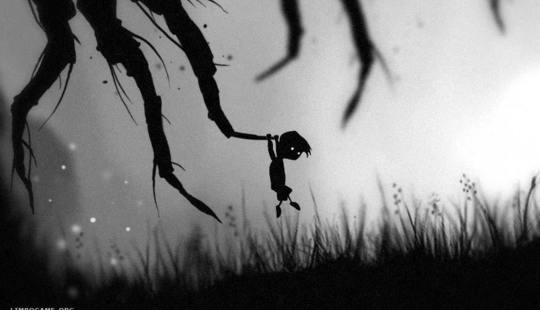
Limbo
(Playdead, Microsoft Games Studios; 2010)
Platforms: OS X, Windows, Xbox 360, PlayStation 3
A puzzle-platformer like no other puzzle-platformer you’ve ever played, or will do again, Limbo is a beautiful, shocking, invigorating, distressing, enthralling and utterly original piece of… well, if this isn’t art in videogame form, I don’t know what is. Monochromatic, hazy visuals and extremely minimalist audio unsettle the player; devious puzzles lop our tiny hero’s head off, split him in two, crush him, splat him, impale him… Death is instant, and way more brutal than what’s seen in games quite obviously aimed at ‘mature’ players. The story is what you choose to make of it – all that’s clear is that the boy, the wide-eyed, blindly-fumbling-onwards protagonist of this exquisite piece, must continue from left to right until, finally, he reaches his goal. And then: blackness, nothing. A perfect rainy day game, Limbo can be beaten in three hours. But the emptiness it leaves on ‘completion’ lasts far, far longer.
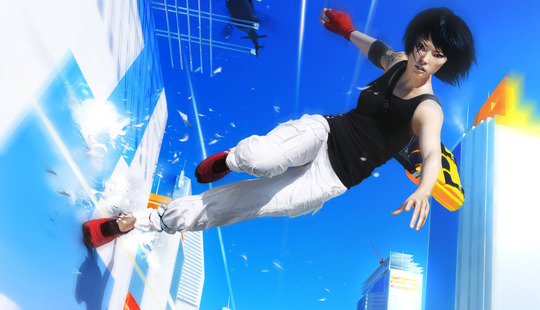
Mirror’s Edge
(EA Digital Illusions CE, Electronic Arts; 2008)
Platforms: Windows, PlayStation 3, Xbox 360
It’s hard, some years after completing it, to remember the frustration that accompanied a play through of this innovative, if deeply flawed, first-person platformer. For a start, making leaps from A to B in such a perspective could be a nightmare; add to that level designs not always conducive to elegant parkour-style traversing, and cops with guns doing their utmost to bring you down mid-jump, and… Oh, there you go. The red mist has descended again. So why highlight Mirror’s Edge as a game that stands out as one of this generation’s very best? Because it’s got balls. Nobody had made a game like it before, and nobody has since – albeit for very good reasons, as not everything worked. It rewards avoiding conflict. And because it looks stunning, the bleached-white buildings of its high-rise playgrounds contrasted by flashes of bright blues, reds and oranges. Quoted in issue 126 of Games TM, Half Life 2 and Dishonored art director Viktor Antonov called this game “an example of pure design… It’s about experiencing a city and its architecture in a meaningful way, rather than having it as a backdrop to the game”. The environment is the game, and that in itself is a pretty radical concept.
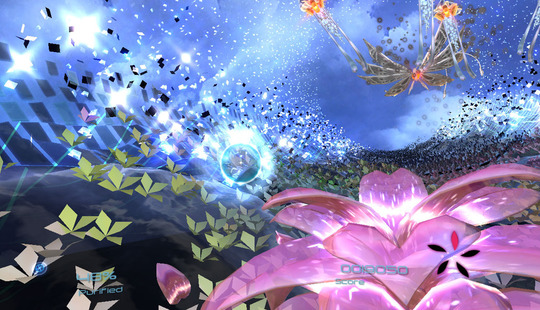
Child of Eden
(Q Entertainment, Ubisoft; 2011)
Platforms: Xbox 360, PlayStation 3
Say the word Rez to a certain breed of gamer and you’ll be stuck with them for a good 10 minutes. If you’ve ever played Tetsuya Mizuguchi’s unprecedented rail-shooter-cum-rhythm-action classic, released for PlayStation 2 and Dreamcast in 2001/2 (and in HD via Xbox Live Arcade in 2008), you’ve got plenty to say about it. Only, getting the words out doesn’t come easily. It’s a simple thing – line targets up in your sights, shoot them, proceed to next stage. Easy. Pure. And Rez is both of these things. Its packaging was inspired, though. As visually arresting over a shoulder as when you’re playing the thing, Rez also harnessed the emotional connect of electronic music, embellishing it with player-determined sound effects, to result in an experience unrivalled in 21st century gaming. Until Child of Eden came along, anyway. It might not be a big-seller, but Child of Eden is the best Kinect-compatible title available for the 360, and it works well enough with the PlayStation Move set-up, and with regular controllers too. Like Rez, there’s no plot to speak of; but if it’s complete immersion in a fantastical digital world you’re after, this is your game.

Batman: Arkham City
(Rocksteady, Warner Bros. Interactive Entertainment; 2011)
Platforms: Xbox 360, PlayStation 3, Microsoft Windows, Wii U (forthcoming)
(Reviewed in Savage Pixels #5)
Yes, I know. Rocksteady’s second sandbox Batman adventure was a huge commercial success, reaching sales of two million in October and over six million by February 2012, and was one of the highest-rated games of 2011. So why is it here? Because… Around Arkham City’s release I somehow managed to have two copies in my possession. Being the kind-hearted soul I am (and because you can’t sell PS3 promos to a certain high-street chain trading in second-hand games) I gave a copy to my then-neighbour. I moved house in January, but returned to my old haunt a few months later, meeting said neighbour-of-recent-past for a drink or some in what was once my local. I asked him if he’d played this yet, as I’d done so and loved every second. No, he told me. He really only bought his PlayStation 3 for the driving games. I’m sure I didn’t spill my pint, but in my mind’s eye my jaw was certainly detached and rolling about the pub’s garden. So! If you see your own attitude to gaming reflected in this story, reader, do please take a chance on something different. Take a chance on Arkham City! Over six million players can’t be wrong. And they’re not.
There are more. Way more. Please do list your own examples of contemporary games capturing that “old gaming passion”. Rayman: Origins? Little King’s Story? Vanquish? Maaan, I love Platinum Games. Maybe I need to run a Developers Special, soon.
Next time! Resident Evil 6 and the decline of survival horror. And some other stuff. Maybe Dishonored. Probably Dishonored. Can someone send me a copy of Dishonored, please?
I’m on that Twitter.
Homeboy Sandman photo by Eric Coleman






















